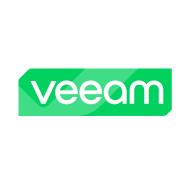


Quest Foglight for Virtualization and Veeam Data Platform compete in managing and protecting virtualized environments. Veeam appears to have the upper hand due to its comprehensive features that many buyers find worth the price despite being more costly.
Features: Quest Foglight for Virtualization offers robust performance monitoring, advanced capacity planning, and deep insights aiding resource optimization. Veeam Data Platform focuses on advanced data protection, reliable backup services, and effective disaster recovery capabilities, showcasing a strong emphasis on data security and recovery.
Ease of Deployment and Customer Service: Quest Foglight for Virtualization is recognized for straightforward deployment with a user-friendly installation process. Its customer service is responsive and helpful. Veeam Data Platform supports versatile deployment across various environments and has customer service noted for expertise in troubleshooting complex issues.
Pricing and ROI: Quest Foglight for Virtualization generally provides a cost-effective solution with quicker ROI due to lower setup costs. Veeam Data Platform offers substantial long-term ROI by reducing downtime and enhancing data security, justifying its higher expense for many.



IBM Turbonomic offers automation, planning, and right-sizing recommendations to streamline resource management, improve efficiencies, and optimize costs across virtualized environments and cloud platforms.
IBM Turbonomic is valued for its capability to optimize resource allocation and monitor virtual environments efficiently. It facilitates automated decision-making in VM sizing, load balancing, and cost optimization for both on-premises and cloud deployments. Users can leverage insights for workload placement, ensure peak performance assurance, and effectively right-size across VMware and Azure. The ongoing transition to HTML5 aims to improve visual and navigational ease, while expanded reporting features are anticipated. Opportunities for improved training, documentation, and integrations enhance platform usability and functionality.
What Are the Key Features?In finance, IBM Turbonomic aids in maintaining platform efficiency during market fluctuations. Healthcare organizations leverage its capability for resource optimization during high-demand periods to enhance patient care support. Retailers use it for planning in peak seasons, ensuring resources align with fluctuating demand to maintain performance continuity.
Veeam Data Platform ensures comprehensive data resilience by offering secure backups and intelligent data insights, catering to the complexities of modern data management.
Veeam Data Platform empowers businesses with reliable data protection, orchestrated recovery, and streamlined management. Providing peace of mind, it guarantees data is secure, available, and effortlessly recoverable. Organizations benefit from features such as instant recovery, simplified management, and compatibility with virtual environments. While it shines in backup and restore capabilities, it calls for improvements in integration with physical servers and enhanced cyber security features.
What are the key features of Veeam Data Platform?Organizations in industries like finance, healthcare, and manufacturing utilize Veeam Data Platform for critical data management, ensuring business continuity and disaster recovery. Employed in securing both virtual and physical workloads, Veeam integrates cloud storage for enhanced scalability and efficiency.
We monitor all Virtualization Management Tools reviews to prevent fraudulent reviews and keep review quality high. We do not post reviews by company employees or direct competitors. We validate each review for authenticity via cross-reference with LinkedIn, and personal follow-up with the reviewer when necessary.